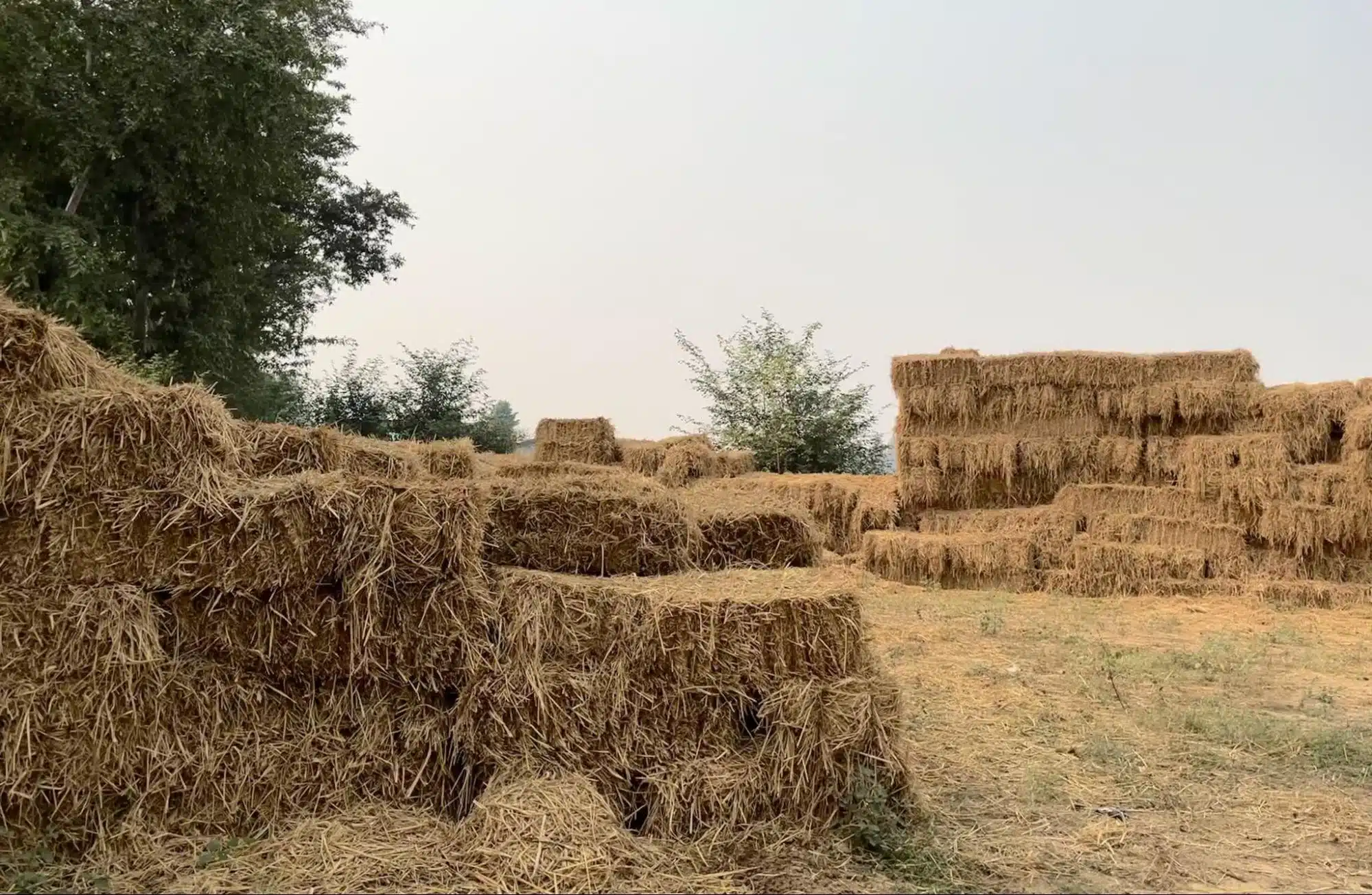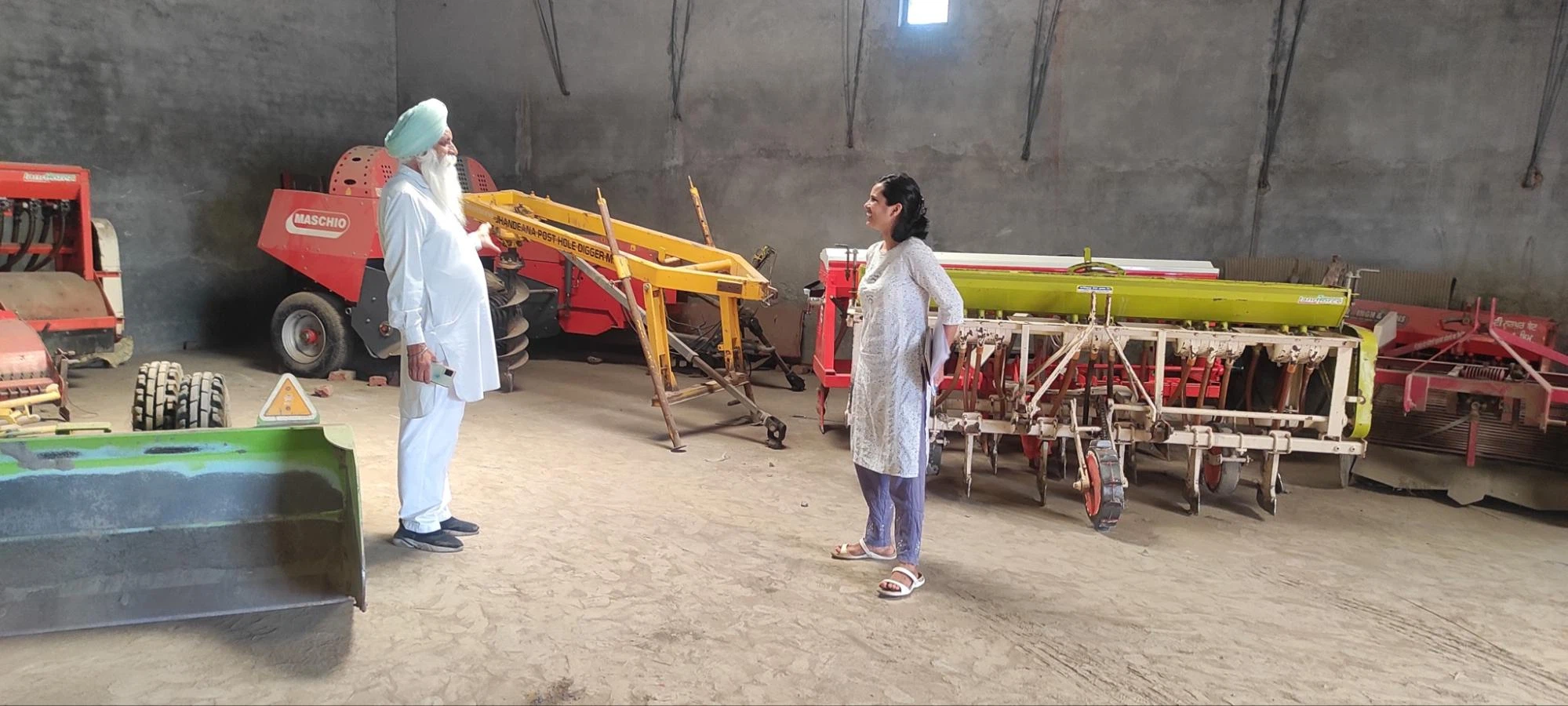



As the thick haze of smog covers the National Capital Region every year, a familiar concern looms: crop residue burning. Although the issue of stubble burning persists in the winter months, it requires targeted policies throughout the year to curb air pollution. For instance, Haryana unveiled a plan to eliminate crop residue burning completely by 2027, and Punjab set an ambitious target of zero farm fires in FY 2024 - 25. The National Green Tribunal has also ordered these states to develop action plans to tackle crop residue burning in 2024. This responsibility does not rest with the states alone and requires close coordination between the state and the central government. Further, the execution of these ambitious plans requires commensurate financial and policy support from the Centre.
This year’s interim Budget shows the potential to support the states’ strategies through separate allocations to address crop residue-utilising industries’ demand and supply-linked challenges. However, the in-farm utilisation of crop residue has gotten limited focus this year. We unpack what the interim Union Budget 2024-25 had in store for Crop Residue Management (CRM). These are crucial headwinds for what is to come this year and for setting in place mechanisms to lessen stubble burning later.
Taking crop residue off the farm – Strong impetus for ex-situ management
Ex-situ management refers to the baling and transportation of crop residue for the creation of products like biofuels and briquettes for power generation. The interim Budget has, for the first time, delineated explicit financial support for the creation of a robust biomass supply chain, paving the way for the expansion of ex-situ industries. For instance, Compressed Biogas (CBG) producers will receive support of INR 564.75 crore from FY 2023-24 to FY 2026-27 for the procurement of biomass aggregation machinery. The Budget also promises increased capital expenditure (CAPEX) support to ex-situ industries. The allocation to the biofuel sector under the National Bio Energy Programme has seen a four-fold increase from INR 75 crore in 2023-24 to INR 300 crore this year.
Alongside the feedstock and CAPEX challenges, the growth of India’s biofuel sector is plagued by the question: who guarantees the buying of end products of ex-situ industries? Fortunately, this Budget provides us with some answers. The announcement for a phased mandatory blending of CBG in Compressed Natural Gas (CNG) for transport and Piped Natural Gas (PNG) for domestic purposes is expected to eventually create a market for CBG uptake.

An intermediary paddy collection centre in Fatehgarh Sahib District, Punjab
However, there have been a few misses, too. For example, although the Budget promises an increased push for bio-agri inputs, it does not specifically mention anything related to Fermented Organic Manure (FOM) and Liquid Organic Manure (LOM), which are the by-products of CBG production. The lack of offtake for these products is an impediment to the expansion of CBG plants. Moreover, the National Biofuel Fund, designed to support biofuel initiatives under the National Biofuel Policy 2018, still needs a dedicated fund allocation this year.
Mixed signals for crop residue management on farms
This year, unlike the sops for ex-situ management, there is a reduced focus on in-situ crop residue management. In-situ management refers to the retaining, incorporating, or mulching of the crop residues on the farm. Instead, we observe an increase in fund allocation for capacity building, training of farmers, and capital support to rural entrepreneurs.
In FY 2021-22, the Centre provided a stand-alone allocation worth INR 700 crore to the Crop Residue Management (CRM) Scheme. However, it no longer enjoys a separate fund allocation in this year’s Budget and will receive funds from several other schemes. For instance, since FY 2022-23, the government has restructured the Rashtriya Krishi Vikas Yojana (RKVY) to subsume the Sub-Mission on Agriculture Mechanization that provided financial assistance to farmers for procurement of farm machinery and implements, including CRM machines. The support for the CRM scheme now comes under RKVY, Agriculture Infrastructure Fund (AIF), and other agriculture extension schemes. While the budgetary allocation for AIF has remained the same as last year, the allocation for RKVY has increased from INR 6,150 crore in 2023-24 to INR 7,553 crore in 2024-25. Although this is good news, we will have to wait to know the actual quantum of funds to in-situ management in the total allocation.

The Secretary of a Custom Hiring Centre shows available in-situ crop residue management machines for rent to farmers
The Indian Council of Agricultural Research (ICAR) conducted CRM machinery demonstrations on more than 20,000 hectares of farmland in 2022-23. With the government providing a stand-alone allocation of ~INR 235 crore in the Budget 2024-25 for Krishi Vigyan Kendras (KVKs), sanctioned to ICAR, there exists an opportunity to strengthen training and capacity building of farmers for crop residue management.
Increased fund allocation for better oversight and innovation
Monitoring crop residue burning and demanding accountability from the Punjab and Haryana governments are among the mandates of the Commission for Air Quality Management (CAQM) in the National Capital Region and adjoining areas. The rise in budgetary allocation for the statutory body from ~INR 13 crore in 2023-24 to INR 16 crore this year will help the commission maintain better oversight of the burning situation, among its other responsibilities.
The standalone allocation of ~INR 91 crore under the Department of Agricultural Research and Education for Agriculture Production and Post-Production Mechanization Augmented with Innovative Technologies for Sustainable Agriculture Development is also a positive move as it can encourage indigenous development of both in-situ and ex-situ machinery to handle crop stubble.
Tackling stubble burning in the long term
This year’s interim Budget has promised several new initiatives, following closely on the heels of renewed action plans to curb crop residue burning by both Punjab and Haryana. Most of these initiatives encourage ex-situ management, and the biofuel industry has welcomed the announcements aiming to address their upstream, downstream, and CAPEX challenges. However, with no dedicated allocation to the CRM scheme, the future of in-situ management looks unclear.
We will have to wait for the full Budget in July to know the exact allocations to both in-situ and ex-situ management. Moreover, we will only see the impact of the Budget announcements on the improvement in air quality, farmers’ incomes, sustainable agriculture, and the sustainability of industries relying on crop residue in the coming years.
Harsha Arya and Srishti Jain are Consultants, and Mohammad Rafiuddin is a Programme Associate at the Council on Energy, Environment and Water (CEEW). Send your comments to [email protected].



Add new comment